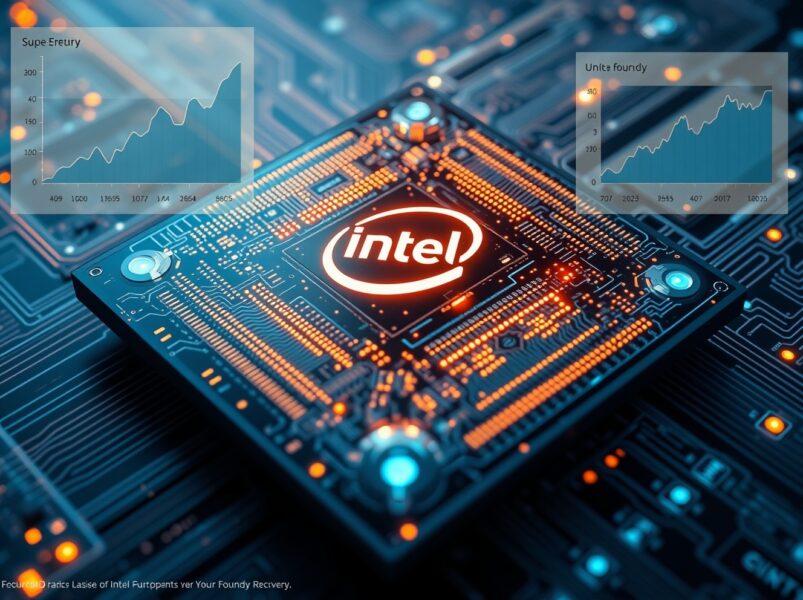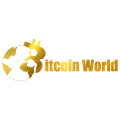Intel’s Resurgent Q3 Fuels Foundry Business Hopes
0
0

BitcoinWorld
Intel’s Resurgent Q3 Fuels Foundry Business Hopes
For those navigating the dynamic world of cryptocurrencies and decentralized tech, understanding the health of core infrastructure providers like Intel is paramount. A strong Intel recovery doesn’t just impact traditional markets; it signals stability and innovation in the underlying hardware that powers everything from mining rigs to AI models. Intel’s recent third-quarter earnings report has sent a ripple of optimism across the tech landscape, signaling a potential turnaround for the long-struggling semiconductor giant. After a period marked by significant losses, the company delivered results that exceeded Wall Street’s expectations, largely thanks to a surge in revenue combined with aggressive cost-cutting measures and a series of high-profile investments. This resurgence puts a spotlight squarely on Intel’s ambitious foundry business, seen by many as the linchpin for its long-term growth and competitive edge.
How is Intel Recovery Fueling a Financial Turnaround?
Intel’s Q3 performance painted a much brighter picture than previous quarters. The company reported a significant increase in quarterly revenue, reaching $13.7 billion, up from $12.9 billion in the prior quarter. More impressively, Intel achieved a net income of $4.1 billion, a dramatic reversal from the staggering $16.6 billion loss reported in the same period last year. CEO Lip-Bu Tan attributed this positive shift not only to improved operational efficiency but also to strategic financial maneuvers. The company successfully added an impressive $20 billion to its balance sheet during the third quarter, providing crucial operational flexibility as it navigates a highly competitive market. This financial fortification is a clear indicator that the Intel recovery is gaining momentum, laying a solid foundation for future initiatives.
What Strategic Tech Investments are Powering Intel’s Comeback?
A key factor in Intel’s improved financial standing has been a series of substantial external investments, underscoring renewed confidence in the company’s future. These strategic injections of capital have been pivotal in bolstering Intel’s balance sheet and enabling its ambitious plans. Here’s a look at the major players:
- SoftBank’s $2 Billion Boost: In August, SoftBank made a significant $2 billion investment, demonstrating a belief in Intel’s strategic direction.
- U.S. Government’s Unprecedented Stake: The U.S. Government took an extraordinary 10% equity stake in Intel, committing $8.9 billion, with $5.7 billion already received. This move highlights Intel’s critical role as the only U.S.-based semiconductor giant with leading-edge logic, research and development, and manufacturing capabilities. President Trump and Secretary Howard Lutnick’s support emphasizes Intel’s strategic national importance.
- Nvidia’s $5 Billion Partnership: September saw Nvidia acquire a $5 billion stake in Intel. This investment is part of a broader collaboration aimed at developing advanced chips together, signaling a powerful alliance in the competitive semiconductor landscape.
Beyond these investments, Intel also strengthened its financial position through strategic divestments, including the $5.2 billion sale of its ownership stake in Altera and the sale of its stake in Mobileye, an autonomous driving tech company. These actions collectively underscore a focused effort to streamline operations and concentrate resources on core growth areas.
Why is the Intel Foundry Business Critical for Future Growth?
Despite the positive financial results, much of Wall Street’s long-term outlook for Intel hinges on the success of its foundry business, which specializes in making custom chips for other companies. This segment has historically faced challenges but is now a primary focus for CEO Lip-Bu Tan. The U.S. government’s investment comes with a crucial condition: penalties if Intel divests from its foundry business over the next five years, emphasizing its strategic importance for national technological independence. Analysts believe that while cash was needed, a clear strategy for the foundry business is even more critical for sustainable growth. Tan expressed confidence that Intel’s foundry business is “uniquely positioned” to capitalize on the escalating global demand for chips, although he remained “light on details” regarding specific customer engagements, emphasizing a disciplined growth approach. “Building a world-class foundry is a long-term effort founded on trust,” Tan stated, highlighting the necessity of designing processes easily adaptable for diverse customer needs.
What Challenges Lie Ahead for the Semiconductor Giant?
Even with a strong quarter and significant investments, Intel faces substantial hurdles. The foundry business, while promising, requires immense capital expenditure, cutting-edge technology, and the ability to attract and retain major customers in a market dominated by established players. The semiconductor industry is fiercely competitive, with rapid technological advancements and geopolitical pressures constantly shaping the landscape. Intel’s ability to execute its foundry strategy effectively will determine its trajectory as a leading semiconductor giant. The layoffs initiated in the foundry business earlier in the summer indicate a commitment to efficiency, but the path to becoming a top-tier foundry provider is arduous and demands sustained innovation and flawless execution.
What’s Next for Chip Manufacturing?
The future of chip manufacturing at Intel is not just about producing more chips; it’s about pioneering next-generation technologies and establishing itself as a trusted partner in a global supply chain. The collaboration with Nvidia on chip development, coupled with the U.S. government’s strategic backing, positions Intel to potentially reclaim its leadership in advanced semiconductor fabrication. The company’s focus on meeting diverse customer needs for performance, yield, cost, and schedule will be crucial. As the demand for high-performance computing, AI, and edge devices continues to skyrocket, Intel’s success in its foundry venture could reshape the global semiconductor ecosystem, impacting industries from consumer electronics to enterprise solutions and even the underlying infrastructure for blockchain and AI applications. The coming quarters will reveal whether Intel can translate its financial recovery into a lasting dominance in the critical world of custom chip production.
Summary: Intel’s Pivotal Moment
Intel’s impressive third-quarter earnings signal a pivotal moment in its turnaround journey. Fueled by strategic investments and a disciplined approach to cost management, the company is aggressively pursuing a revitalized future, with its foundry business at the core. While challenges remain, the renewed financial strength and strategic partnerships offer a compelling narrative for Intel’s long-term prospects. The eyes of the tech world, from Wall Street to crypto enthusiasts, will be closely watching as this semiconductor giant endeavors to solidify its position in the ever-evolving landscape of chip manufacturing.
To learn more about the latest AI market trends, explore our article on key developments shaping AI features.
This post Intel’s Resurgent Q3 Fuels Foundry Business Hopes first appeared on BitcoinWorld.
0
0
 Manage all your crypto, NFT and DeFi from one place
Manage all your crypto, NFT and DeFi from one placeSecurely connect the portfolio you’re using to start.







